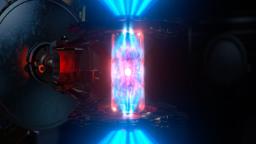
Scientists at Lawrence Livermore National Laboratory’s National Ignition Facility made history by successfully performing a nuclear fusion reaction that yielded net energy, a breakthrough that U.S. officials hailed as a “landmark achievement” and “future clean.” Energy Milestone”.
Here are the key takeaways from today’s announcement — and possible next steps:
What is nuclear fusion and why is it important? Nuclear fusion is a man-made process that replicates the same energy that powers the sun. Nuclear fusion occurs when two or more atoms fuse to form a larger atom, a process that generates a lot of energy as heat.
Scientists around the world have been studying nuclear fusion for decades, The hope is to recreate it with a new energy source that provides unlimited, carbon-free energy — without the nuclear waste generated by current nuclear reactors. Fusion projects primarily use the elements deuterium and tritium — both isotopes of hydrogen.
Deuterium in a glass of water, plus a little tritium, can power a house for a year. Tritium is rarer and more difficult to obtain, although it can be crafted synthetically.
“Unlike coal, you only need a small amount of hydrogen, and it’s the most abundant thing found in the universe,” Julio Friedman, chief scientist at Carbon Direct and former chief energy technologist at Lawrence Livermore, told CNN. “Hydrogen exists in water, so the matter that produces this energy is infinite and clean.”
Why is today’s announcement significant? This is the first time scientists have managed to produce the product without breaking even as past experiments have done.
While there are still many steps before it’s commercially viable, scientists must prove they can create more energy than they started with. Otherwise, there is little point in developing it.
“It’s very important because from an energy standpoint, if you don’t take more energy out than you put in, it can’t be energy,” Friedman told CNN. “The previous breakthroughs were important, But that’s not the same as generating energy that could one day be used on a large scale.”
What’s the next step? Scientists and experts now need to figure out how to generate more energy from fusion on a larger scale.
In the meantime, they need to figure out how to eventually make fusion so cheap that it can be used commercially.
Scientists also need to harvest the energy produced by fusion and send it to the grid as electricity. It will be years — possibly decades — before fusion can generate unlimited amounts of clean energy — and scientists are in a race against time to combat climate change.